That mummy doesn't belong to the King's Djoser It doesn't belong to him in the least".. On a chilly night of the winter of 1822, with those intermittent phrases, the Italian engineer "Guerlano Segato" jumped screaming in an exceedingly desperate voice, his redeyes suggesting that a powerful shock had been suffered, or perhaps an unfulfilled hope that was awaiting something to immortalize his history.
In the midst of grief, Seegato failed to feel that approach, a handsome, tall, rectangular-headed man with an oblong head, and a moustache that hid the contours of his mouth, he barely put his hands on his shoulders until he rose in horror, before turning to him in an exceedingly whispering voice, not for the king's Djoser "Heinrich", that mummy doesn't belong to the owner of that pyramid, It was the German archaeologist Heinrich von Maltzan, some months ago, amid Sejato, discovered the runway of Djoser pyramid, Then she patted his shoulders, saying, Do not be sad, Sejato, we are going to find him Here or there, we may find him lying inside one in every of the key vaults.

Nearly a century have passed since that incident, and none of the scientists found any trace of the mother of King Djoser inside his pyramid, it took the difficulty of building that massive pyramid, which contains over 3 million and 330 thousand cubic meters of stone of clay and stone, and was designed by the nice engineer "Imhotep", the primary architect in history, about four thousand 600 BC within the northwest of the old city of Memphis, and now located within the city of Badrshin in giza governorate, and despite the presence of quite 400 rooms, and plenty of intricate passages and crypts, nobody must today found any trace of the mother of the Egyptian King Djoser.

In 1921, the archaeological team found the remains of a mummy inside one among the side passages, a skull covered with gold and two heels also covered with gold, but unfortunately it failed to belong to King Djoser, and although to the current day it's an unidentified mummy, all research proved that it belonged to a later period on the age during which the listed pyramid was built, and over fifteen years later, specifically in mid-1934 the archeologist "Jane Lauer" believed that the remains of the king had found the remains of the king's mummy, Djoser is inside the most chamber of the pyramid, but in 1988 Cairo University researchers discovered that it didn't belong to the king, which per the history of radioactive carbon belonged to people belonging to the Ptolemaic era.

The most important question now, who is King Djoser, is that the second Egyptian king within the order of the kings of the thirteenth dynasty, took the throne at the start of the traditional state, specifically during the amount from 2686 BC to 2600 B.C., and his name was mentioned within Turin Papyrus In red color, in recognition of the remainder of the kings of the traditional state, and also the pyramid of the amphian ordered by the engineer to make the primary large stone building in history, and built it a mile from the Saqqara cliff to induce off from the remainder of the tombs.

The Djoser listed pyramid consists of six uneven terraces, up to 63 meters high, and an oblong base with an oblong base of 109 and 125 meters, It was covered with white limestone, and therefore the interior consisted of a network of intricate corridors and vestibules, within the middle of the king's sepulchre, built of granite and marble, thus the primary royal tomb in history inbuilt a pyramidal type of a collection of terraces, making it an amazing development within the design of the tombs of that era, which was content with one terrace, on its walls over 400 thousand inscriptions listing the history of the traditional state.
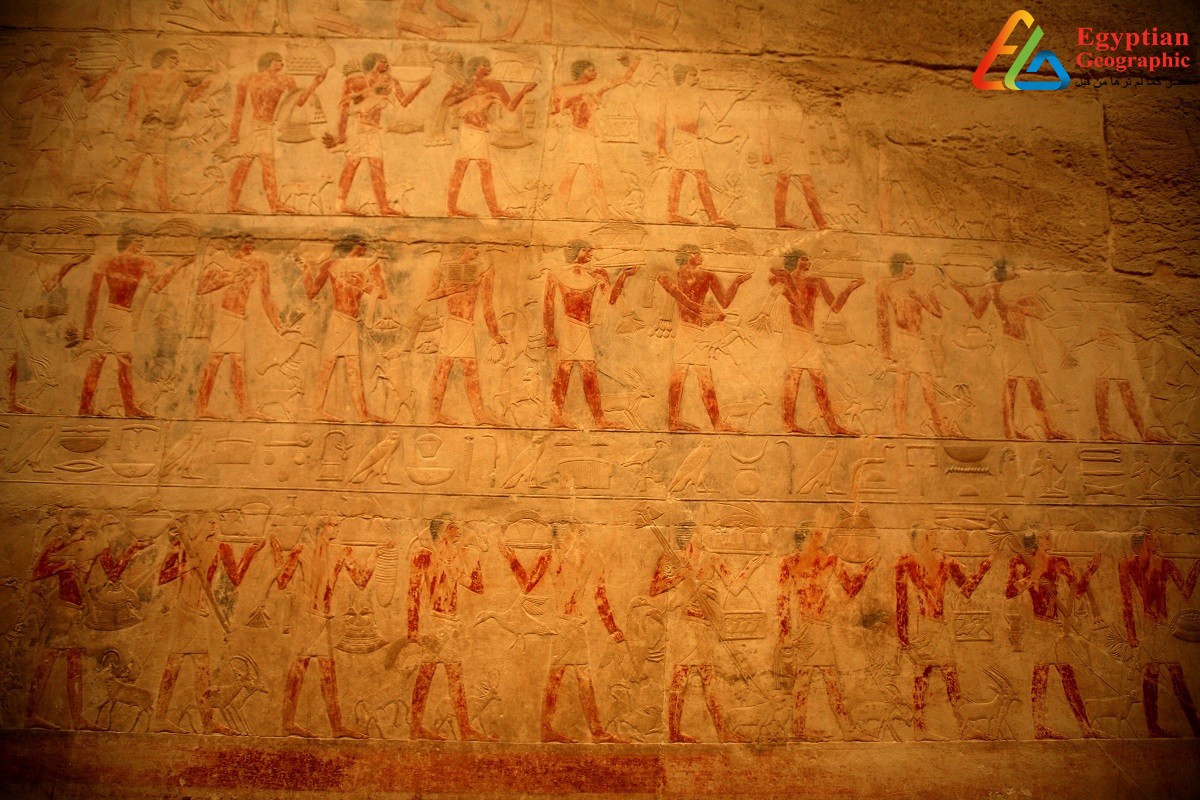
The listed pyramid is surrounded by an oversized courtyard called the "Bridge of the Director", also called the "Great Fence", the oldest known stone building in Egypt, and appears to possess already been in-built twenty years, between 2737 bc and 2717 b.c., the Djoser pyramid was built on quite 5.7 km of columns, rooms and imaginary tunnels, with the aim of misleading thieves, additionally to a large wall surrounding the pyramid up to 1645 meters long and 10.5 meters high, and is connected the pyramid of the nice trench, up to 40 meters wide, and a length of up to 750, additionally to the southern cemetery and therefore the funerary temple which contains the statue of King Djoser north of the pyramid, and also the Grand Court Square, which is found south of the pyramid.

The destination of the pyramid listed itself contains large balconies and statues of multi-size king Djoser, a number of them lifesize, and inside the pyramid we discover many corridors altogether directions, beneath the pyramid about 28 meters located that royal room, the length of about 7 meters, designed in red granite With smooth surfaces in four layers, an area that researchers call "maneuver room" ends up in the king's chamber through a round opening about one meter in diameter, and is closed with a granite stone weighing about 3.5 tons, which is placed above it. The initial terrace of the pyramid itself, but freed from the body of King Djoser himself.

The pyramid has witnessed variety of stages of construction, initially within the style of square terraces, then changed to rectangular terraces placed on six levels, as four vestiges were built round the sepulcher, connected by a series of corridors to place funerary furniture, as a tunnel extending to twenty meters north, and therefore the entrance of this tunnel is found outside the listed pyramid, and was found inside one in all the corridors of the pyramid of a sarcophagus of alabaster, and quite 30 thousand pots were found product of alabaster The Diorit, engraved with the names of King Djoser's ancestors.




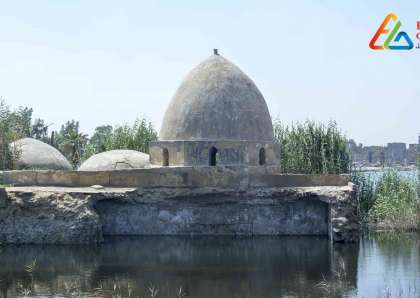

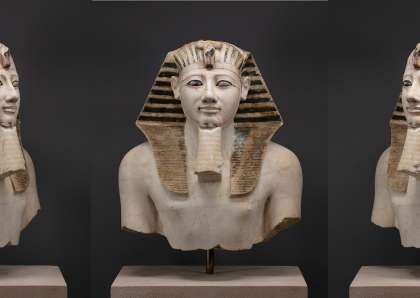












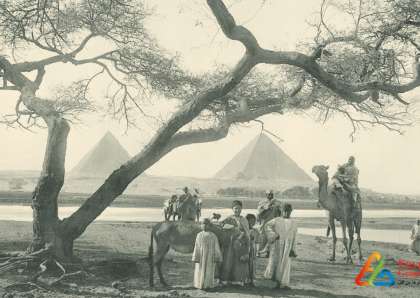








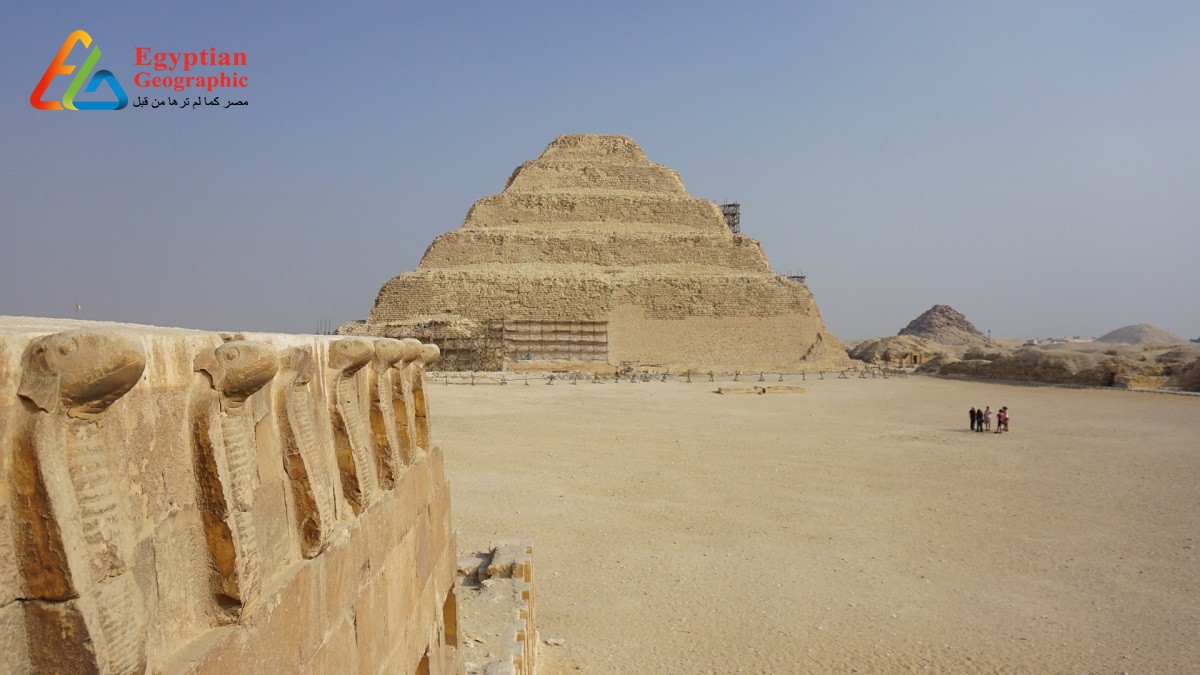













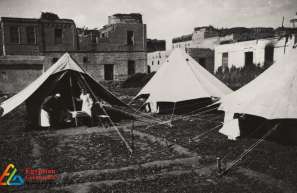



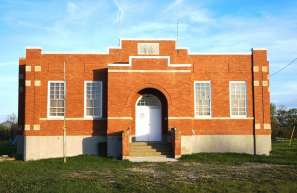








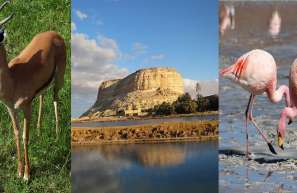
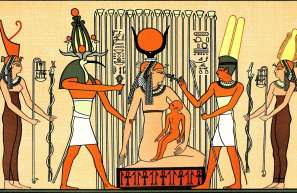










Egyptian Site & magazine